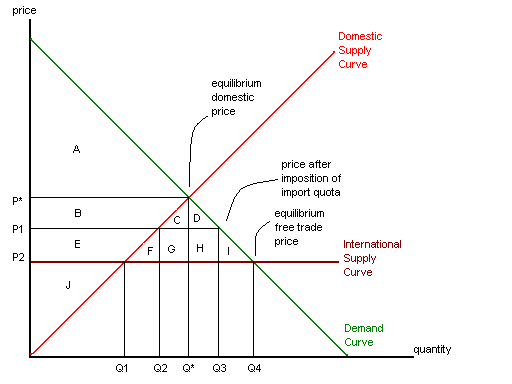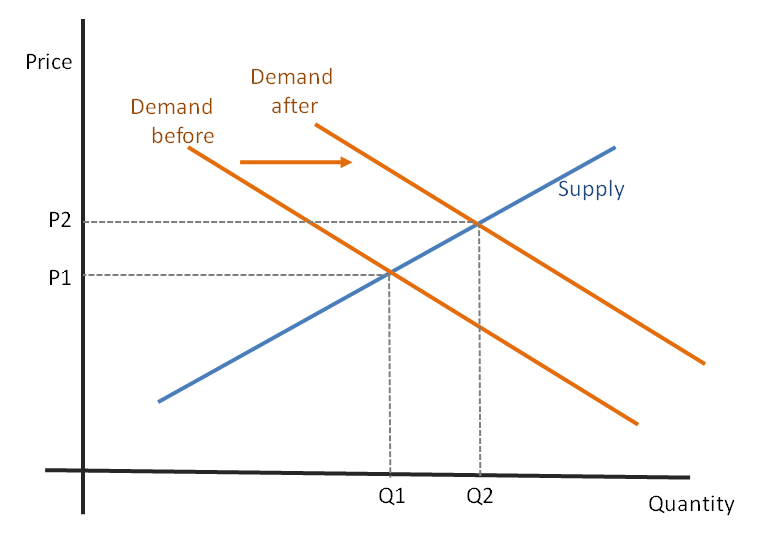Okay- final bit, and then we can all write our exams and promptly forget everything we ever needed to know about economics! =D
What is a balance of payments? It's a summary account of all the receipts and payments in and out of Canada (or any other country) in relation to the rest of the world (including payments made for both goods and investments). It clocks Canadian money moving back and forth across the border. Receipts are money going into Canada, and payments are money going out of Canada.
The balance of payments includes both current and capital accounts. Because these two accounts always balance out, the balance of payments will always be 0. You'll see why in a little bit.
SOME TERMS
A SURPLUS
-There is more money going in than out
-This is favorable
-We also call this "credit"
-More receipts than payments
A DEFICIT
-There is more money leaving than entering the country
-This is unfavorable
-We also call this a debit
-More payments than receipts
When foreign consumers buy Canadian exports, this creates a receipt (money enters Canada from the outside)
When domestic consumers buy foreign imports, this creates a payment (money leaves Canada)
OFFICIAL RESERVES
-These are holdings held by the BoC
-It includes gold, foreign exchange, and SDRs
-SDRs are special drawing rights, and they are the IMFs substitute for gold
-------------------------------------------
SO WHAT COMPOSES THE BALANCE OF PAYMENTS?
Basically, a bunch of different sub-accounts which measure trade flows
1: The Current Account (The BOP for goods)
-This encompasses exports, imports, and investment incomes
-The Trade Account is a subcategory of the current account, and it includes an account for merchandise, and an account for services. This account stacks up exports and imports and measures the difference difference
-The Capital Service Account measures the net investment income and unilateral money transfers. This measures the difference between Canadian interest and dividends on foreign bonds and investments, and Foreign interest and dividents on Canadian bonds and investments
2: The Capital Account
-This encompasses money spend on long and short term capital investments, including stocks, bonds, realty, factories and other investment devices
-Financial capital imports are A CREDIT (this may be confusing)! This is when foreigners bring money into Canada in order to purchase Canadian assets. Subsequently, financial capital exports are capital outflows: when Canadians bring money out of Canada in order to purchase foreign assets.
-Finally, the Capital account also includes the official financial account, which measures receipts and payments of Canadian dollars due to the selling and buying of foreign exchange. Selling foreign exchange constitutes a receipt of Canadian dollars, and thus counts as a receipt on the balance of payments. Essentially, the official financial account balances out the other two accounts: when Canadians buy a whole lot of foreign goods and investments, for instance, the BoC accommodates this by selling off foreign exchange for Canadian dollars (which thus counteracts the account deficit caused by other categories)
-An increase in official receipts means that the Bank of Canada is selling Canadian dollars in order to buy foreign exchange. This creates a negative balance effect (it counts as a debit on the balance sheet)
-An decrease in official receipts means that the BoC is selling foreign exchange in order to buy Canadian dollars. This creates a positive balance effect (it counts as a credit on the balance sheet)
IN SUMMARY
Current accounts = X - M + Returns to Investments
Capital Accounts = Capital in - Capital out, + Official Financing Account (which is Can$ in - Can$ out)
As you can see, the OFA always balances out all other payments and receipts, so the Balance of Payments is always 0! Sometimes, news media will talk about exchange deficits or credits, and when they are doing this, they are usually omitting the OFA.
So... if there are more exports than imports, foreigners are short of Canadian dollars, so the BoC will sell Canadian currency to foreigners (and in doing so, increase its holdings of foreign currency). This counts as a negative entry in the OFA: in this way, the BoC provides the excess Canadian money that foreigners require to buy Canadian exports.
Okay?
-The BOP always balances
-BOP balances or deficits are balanced out by the OFA
-There is nothing inherently good or bad about balances. A deficit is not necessarily bad, and a surplus is not necessarily good!
THE FLOATING EXCHANGE RATE ACTS AS AN ECONOMIC SHOCK ABSORBER!
----------------------
Okay- foreign exchange can be seen as a marketable good, just like anything else. As such, we have the FOREIGN EXCHANGE MARKET
External Value is how much domestic currency is worth in foreign terms (the foreign price of domestic currency)
Exchange Rate is how much foreign currency is worth in domestic terms (the domestic price of foreign currency)
ER = 1/EV & EV = 1/ER
Depreciation means that the external value is going down
Appreciation means that the external value is going up
What determines external value (and by association, exchange rates)???
SUPPLY AND DEMAND!!!

Remember: People supply currency in order to purchase imports or to facilitate capital exports (domestic investiture into foreign markets) and people demand currency in order to purchase domestic exports, or to facilitate capital imports (foreign investiture into domestic markets)...
Basically, supply of any currency increases as that currency becomes valued more (because high valued currencies can buy more imports, and translate into larger foreign investments), while demand for any currency shrinks as that currency appreciates (because this makes exports from that country more expensive, and capital in-flows less effective)
As such, currency prices tend to settle at an equilibrium value!
Remember, however, that demand and supply can shift here to affect the equilibrium price level!
Supply of currency will increase if
-There is heightened demand for imports
-There is heightened domestic demand for investment in foreign markets
-Domestic prices are higher than foreign prices
Demand for currency will increase if
-There is a heightened demand for exports
-There is a heightened foreign demand for investment in domestic markets
-Foreign prices are higher than domestic prices
-----------------
Surpluses, Deficits, and the EV
For surpluses, exports are higher, imports are low, demand for domestic currency is high, supply of it is low, and thus the currency appreciations
For deficits, exports are lower, imports are high, demand for domestic currency is low, supply of it is high, and this the currency depreciates
You can verify this by moving the supply and demand curves around!
----------------
PRICES AND EXCHANGE RATES: Exchange rates facilitate the rule of one world price!
Domestic Prices = the exchange rate * Foreign Prices
And this translates into a stabilization mechanism- I'll show you!
When external value is higher, domestic prices become cheaper for international goods (due to the above formula), and as such, exports decrease, imports increase, and we are left with a BOT deficit (which brings the EV back down again)
The reverse is true for when the domestic value is lowered.
As such, the balance of trades and the exchange rate are interdependent and cyclical!
YOU SHOULD UNDERSTAND HOW THIS CYCLE WORKS
--------------------------


